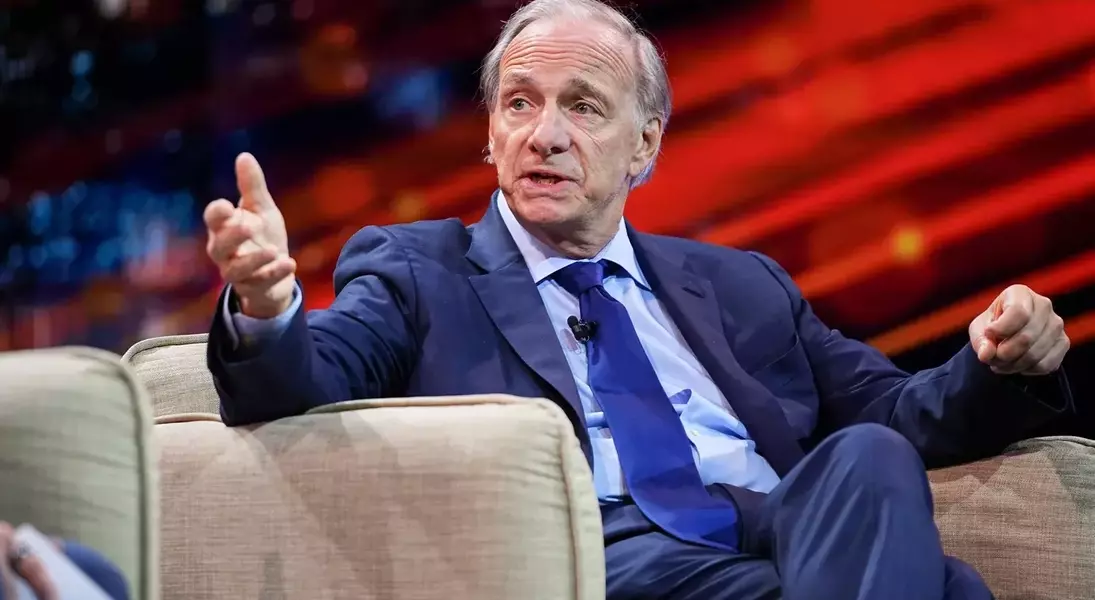
Renowned financial expert Ray Dalio has issued a cautionary statement regarding the current state of financial markets, asserting that they are undoubtedly in a bubble. This warning comes even as companies like Nvidia report stellar earnings, which might lead some investors to believe the market is robust. Dalio, however, stresses that a bubble's existence does not mean an immediate crash, but rather a need for investors to secure their assets. He recommends strategies such as investing in gold and minimizing credit exposure to safeguard against potential market reversals. His insights are particularly relevant in light of historical market peaks, suggesting a period of minimal real returns for stocks in the coming decade.
Dalio's views are echoed by other financial analysts, who also predict subdued future returns. These forecasts are based on current market valuations and various economic indicators. The consensus among these experts is that while the market may continue to rise in the short term, prudent investors should prepare for a less dynamic long-term outlook, focusing on wealth preservation rather than aggressive growth.
Understanding Market Bubbles and Investor Protection
Ray Dalio, a prominent figure in the hedge fund industry and founder of Bridgewater Associates, recently articulated his conviction that the financial markets are currently experiencing a significant bubble. This assessment challenges the prevailing optimism that might be fueled by strong corporate performances, such as the impressive earnings reported by Nvidia. Dalio's perspective is not merely an observation of high valuations but a deeper analysis of market dynamics, where asset prices become detached from their intrinsic values. He suggests that these bubbles do not burst randomly; instead, they unwind when market participants decide to convert their financial assets into more liquid forms, typically cash. This shift in investor behavior can trigger a broad market decline, impacting not only financial assets but also leading to economic and political ramifications. Consequently, while Dalio doesn't advocate for immediate divestment purely based on the bubble's presence, he strongly advises investors to adopt defensive strategies. These include diversifying portfolios with assets traditionally seen as safe havens, such as gold, and prudently managing or reducing credit exposures to cushion against the inevitable market correction.
Dalio's concerns are not isolated. Historical parallels, such as the period leading up to the Great Crash of 1929 and the dot-com bubble of the early 2000s, serve as a stark reminder of the potential consequences of inflated market valuations. In his analysis, the current ratio of U.S. equity wealth to total money supply mirrors these historical peaks, implying that investors might face a decade of near-zero real returns from stocks once inflation and other economic factors are considered. This sentiment is corroborated by other financial institutions, such as GMO, whose seven-year forecast for asset classes projects negative real returns for both large- and small-cap U.S. stocks, irrespective of interest rate movements. Such forecasts are grounded in rigorous valuation models, indicating that the market's current trajectory may not be sustainable in the long run. Therefore, investors are encouraged to heed these warnings and adjust their strategies to prioritize capital preservation and risk management over aggressive growth pursuits in what appears to be an increasingly precarious market environment.
Navigating Future Market Dynamics Amidst Warnings
Amidst a backdrop of robust corporate earnings, particularly from technology giants like Nvidia, the financial landscape is fraught with warnings from seasoned investors such as Ray Dalio. His assertion that markets are currently in a bubble, despite the strong performance of some sectors, necessitates a re-evaluation of conventional investment strategies. Dalio posits that the unwinding of such a bubble is not triggered by a sudden realization of overvaluation but by a collective shift in investor sentiment towards liquidity. This shift, driven by a desire to convert high-value assets into cash, can precipitate a market downturn with far-reaching economic and political consequences. Consequently, while not advocating for panic selling, Dalio strongly recommends that investors proactively safeguard their portfolios. This involves strategic asset allocation, such as increasing holdings in gold, which historically acts as a hedge against market volatility, and diligently reducing any significant credit exposures to mitigate potential losses during a market correction.
The current market conditions, characterized by high equity wealth relative to the total money supply, draw parallels to historical periods preceding major financial crises, including the 1929 crash and the dot-com bubble. These historical precedents suggest that the next decade could see real returns from stock investments hover around zero, once adjusted for inflation and other economic factors. This outlook is reinforced by independent analyses, such as GMO's seven-year asset class forecast, which already indicates negative real returns for U.S. large and small-cap stocks. Such projections underscore the importance of caution and strategic planning for investors. Rather than being swayed by short-term market euphoria, prudent investors should focus on building resilient portfolios that can withstand potential economic shocks. This includes a thorough assessment of risk tolerance, diversification across various asset classes, and a readiness to adapt to changing market conditions, ensuring long-term financial stability even in the face of an impending market bubble burst.
